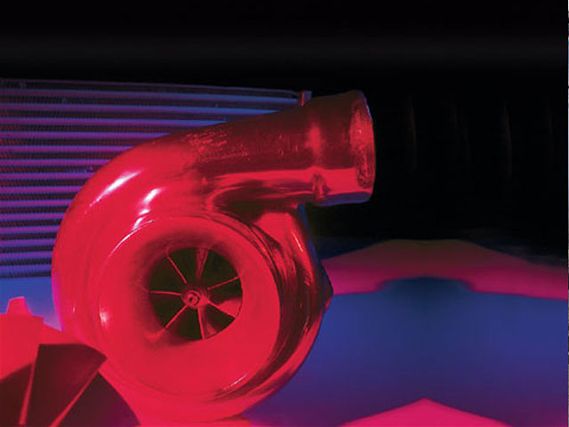 | 8 Reasons Why Turbos Rule The Road - Basic Tech
| 8 Reasons Why Turbos Rule The Road - Basic Tech
1.Because there is a replacement for displacement. The pressurized air generated by a turbo increases the volumetric efficiency of the engine. Allowing a smaller force-fed engine to ingest more charge air than a larger naturally-aspirated engine and therefore have more power potential. Add fuel, tune to your liking and take your four-banger out and cut those V8s off at the knees.
2.The almighty boost knob. The turbo enthusiast can control the output of his engine. It's like controlling your own destiny. Dialing up the boost when that Mustang flexes at a stoplight and turning it down when you're just chillin'. Be careful with that boost, too much without enough fuel can mean big trouble.
3.To spool is to be cool. You're on the freeway and some loser is checking out your ride. Feather the throttle just enough to get the turbo to spool and watch him drool. This is great fun; we do it all the time. Who knows, the fool may want to run.
4.Turbo lag is a myth created by haters. The advent of ball-bearing center sections, improved turbo aerodynamics and a wider variety of wheel and housing combinations has pretty much excommunicated turbo lag. The caveat here is ... as long as you pick the right size for your engine. A T-2-Big is still a T-2-Big.
5.See page 34 ... add 176 WHP to your Acura RSX. Makes you want go out and buy a Type-S.
6.No belts, no whine, no drag. Turbos are free power. Turbos run off exhaust gasses that are on their way out to the atmosphere anyway. Harnessing the flow and heat of exhaust gases spins the turbine impeller, which is connected to the compressor wheel via a common shaft. The compressor increases the density of the air going into the engine and more air combined with more fuel equals more power.
7.Be wise when it comes to size. Bigger is not always better. We will be testing some turbine housings in future issues, which will illustrate what happens to the power curve as the housing gets bigger. In general a bigger housing, or bigger turbo, will make more power at the top end and less at lower engine/wheel speeds. Further, the point of peak power generation tends to climb as the housing/turbo is enlarged. The key is to learn the sweet spot of your engine (on the dyno) and work with the experts to pick a turbo that will enhance power where your engine can make the most use of it. A big turbo looks good but if it hits full boost at 8000 rpm how will it drive?
8.Price per pony. You can spend $500 for 4 hp for a bolt on ($125 per hp) or go turbo and get 100 hp for $5,000 ($50 per hp). These numbers are generalities but you get the picture. Turbos are the ultimate piece of power tuning equipment; they deliver the bigger numbers and are more cost effective. Remember-boost is better.
